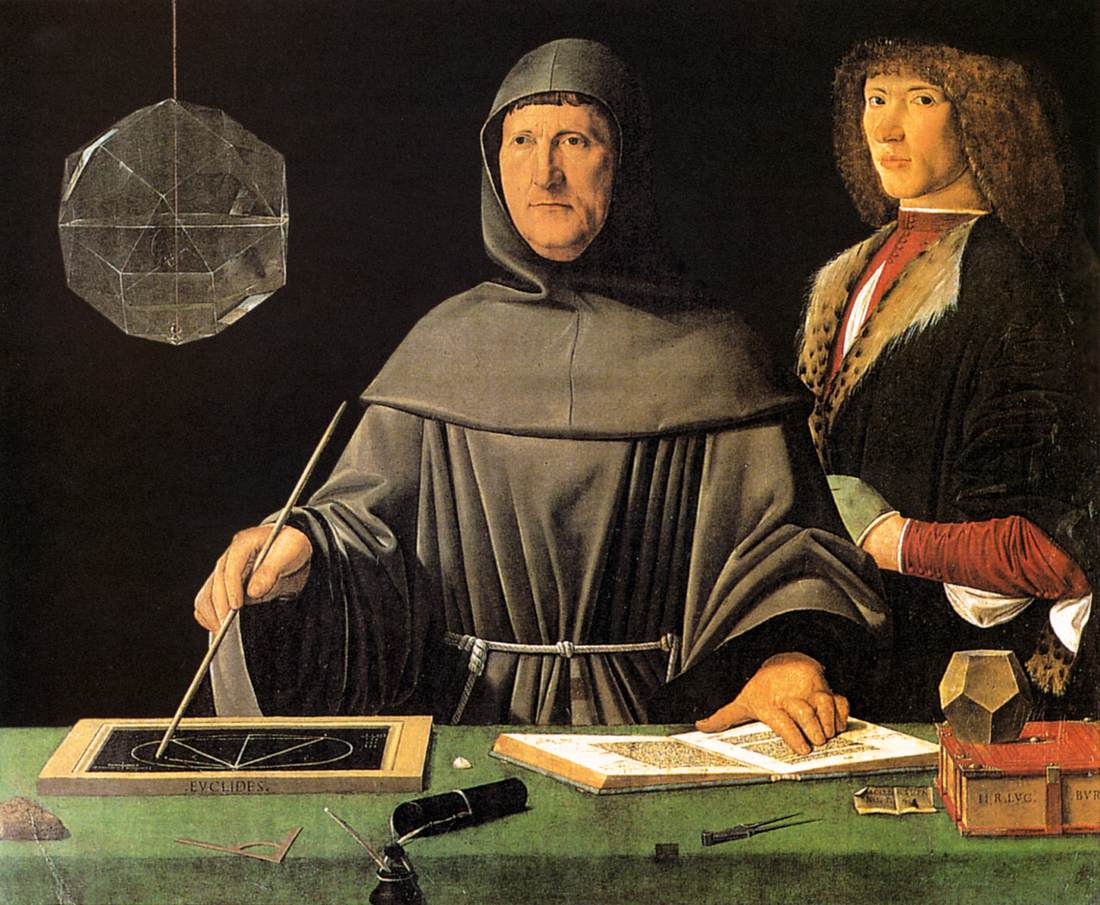
Different cultural and religious belief lead to different interpretations of the Golden Section over the course of history. Let’s analyze some of them:
The Golden Section as “Universal Harmonic Ratio“
- 5th century b.C.
The mathematical concept of proportion, meant as the relation of parts, has first been introduced by Pitagora (Pythagoras of Samos, a great mathematician, mystic, and scientist), who combines balance with mathematics.
Pythagoras and his followers (the Pythagoreans) re-created the composing principles of musical harmony to obtain a “universal harmony” in order to obtain a stable equilibrium. - 18th – 20th century A.D.
The concept of “the Golden Section as Universal Harmonic Ratio” has been used in classical music by great composers as Bach (fugues), Mozart (piano sonatas), Beethoven (Symphony No. 5 in C minor, Op. 67), Schubert (Piano Sonata D 959), Debussy (La Mer) and Strawinski (Le Sacre du Printemps – Symphony in Three Movements). These pieces carry the music back to its pythagoric origin: by mathematical nature, in which the Golden Ratio is the core of the opus.
The Golden Section as “Pleasant-looking Ratio“
- 3rd century b.C.
In Euclid’s Elements -a mathematical and geometric treatise- the shape of the triangle is one of the most important, in particular, the sublime triangle.
The sublime triangle is an isosceles triangle. It can be formed by the conjunction of two diagonals starting from the vertex of a pentagon. The side of the regular pentagon is the Golden Section of the sublime triangle (its base). Triangle inscribed into a regular pentagon form into a star. The golden star. - 16th century A.D.
In 1509 has been published the De divina proporzione ( The divine proportion – a treatise on mathematical and artistic proportion, especially the mathematics of the golden ratio and its application in architecture) written by Luca Pacioli, an Italian mathematician, and Franciscan friar and illustrated by Leonardo da Vinci. The adjective “divina” (divine) used in the title of the treatise refers to two deity’s characteristics: the golden section is UNIQUE and TRIPLE as the Trinity ( indefinable, irrational and invariable ). Luca Pacioli has been probably the first who used the term Sectio Aurea (Golden Section). - 18th century A.D.
The concept of formal beauty has been increased by Kant (German philosopher), who introduced the category of sublime in the aesthetic experience. His main claim is that the mathematics judgments are synthetic a priori.
Synthetic because the result expands the knowledge; a priori because the geometric and mathematic judgments are valid also without experience. According to Kant, the Sublime is endless (synthetic demonstration of Space as geometrical space and synthetic demonstration of Time as arithmetic series).
The Golden Section as “Holy Ratio“
- 9th century b.C. – 3rd century A.D.
The Golden Ratio has been highly used in holy symbolism, as in the Pentaculum Salomonis, in the Sigillum Pythagorae (symbol of health), in the Templar Cross and, in Germany, in the Druidenfuss (druid’s foot). Some of these symbols were considered diabolic; others, as the golden star, as symbols of union between God and the human being.
The Golden Section as “Mathematical Ratio“
- 12th century A.D.
In his Liber Abaci (Book of Abacus), the Italian mathematician Fibonacci introduces a problem involving the growth of a hypothetical population of rabbits. The solution is a sequence of numbers known as Fibonacci numbers. This sequence can be found in natural phenomenon: ray of light’s optics, male bee’s genealogical tree, fire genealogy and so on.
In the Fibonacci sequence, each number is the sum of the previous two. The higher up in the sequence, numbers divided by each other will approach the Golden Ratio: 1.618 (phi).

 Italiano
Italiano